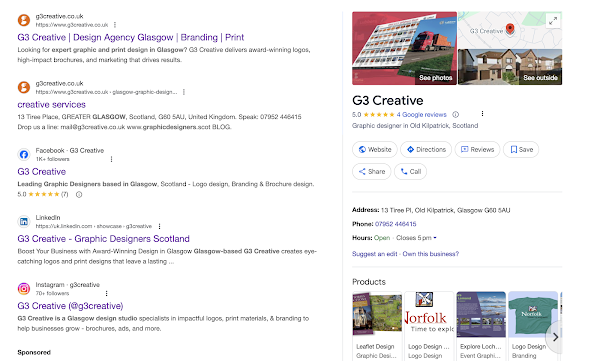The enduring power of Print Design: Why it remains an essential marketing tool
In the era of digital dominance, one might assume that print design has lost its relevance as a marketing tool. However, contrary to popular belief, print design continues to hold a significant place in the marketing landscape. In this blog post, we will explore why print design remains an important and effective marketing tool, even in the digital age.
Tangible and Memorable One of the key strengths of print design lies in its tangibility. Physical marketing materials such as brochures, flyers, and business cards provide a tactile experience that engages multiple senses, leaving a lasting impression on the audience. Holding a beautifully designed print piece can evoke a sense of credibility and trust, fostering a deeper connection with the brand. Unlike digital content that can easily be scrolled past or forgotten, print design has the ability to captivate attention and create a memorable brand experience.
Targeted and Niche Reach Print design allows for precise targeting and niche reach, making it an invaluable tool for reaching specific audiences. Magazines, newspapers, and direct mail campaigns provide opportunities to target specific geographic regions, demographics, or industry segments. By carefully selecting the right print media outlets, businesses can ensure that their marketing messages are delivered directly to their target audience, increasing the chances of engagement and conversion. Print design enables businesses to cut through the noise and deliver their message directly to the hands and homes of their ideal customers.
Complementary to Digital Marketing Rather than being in competition with digital marketing, print design complements it, creating a holistic marketing strategy. The integration of print and digital elements can enhance brand consistency and reinforce key messages across different channels. QR codes, personalized URLs, or social media icons on print materials can bridge the gap between print and digital platforms, driving cross-channel engagement. Additionally, in an era of digital overload, the physicality of print design can provide a welcome respite, capturing the attention of audiences who are seeking a break from the digital world.
In conclusion: Print design continues to hold its ground as an important marketing tool, offering unique advantages that digital channels cannot replicate. Its tangibility, memorable nature, targeted reach, and ability to complement digital efforts make it an essential component of a well-rounded marketing strategy. By harnessing the enduring power of print, businesses can connect with audiences in meaningful ways and make a lasting impression.
Tangible and Memorable One of the key strengths of print design lies in its tangibility. Physical marketing materials such as brochures, flyers, and business cards provide a tactile experience that engages multiple senses, leaving a lasting impression on the audience. Holding a beautifully designed print piece can evoke a sense of credibility and trust, fostering a deeper connection with the brand. Unlike digital content that can easily be scrolled past or forgotten, print design has the ability to captivate attention and create a memorable brand experience.
Targeted and Niche Reach Print design allows for precise targeting and niche reach, making it an invaluable tool for reaching specific audiences. Magazines, newspapers, and direct mail campaigns provide opportunities to target specific geographic regions, demographics, or industry segments. By carefully selecting the right print media outlets, businesses can ensure that their marketing messages are delivered directly to their target audience, increasing the chances of engagement and conversion. Print design enables businesses to cut through the noise and deliver their message directly to the hands and homes of their ideal customers.
Complementary to Digital Marketing Rather than being in competition with digital marketing, print design complements it, creating a holistic marketing strategy. The integration of print and digital elements can enhance brand consistency and reinforce key messages across different channels. QR codes, personalized URLs, or social media icons on print materials can bridge the gap between print and digital platforms, driving cross-channel engagement. Additionally, in an era of digital overload, the physicality of print design can provide a welcome respite, capturing the attention of audiences who are seeking a break from the digital world.
In conclusion: Print design continues to hold its ground as an important marketing tool, offering unique advantages that digital channels cannot replicate. Its tangibility, memorable nature, targeted reach, and ability to complement digital efforts make it an essential component of a well-rounded marketing strategy. By harnessing the enduring power of print, businesses can connect with audiences in meaningful ways and make a lasting impression.




Comments
Post a Comment